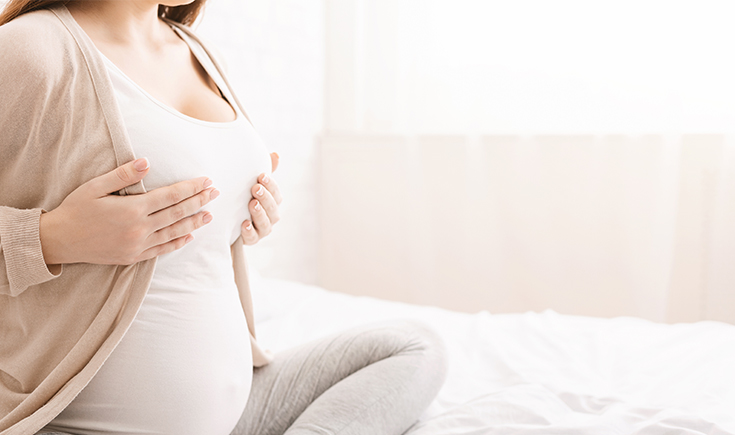

From the moment of conception, all kinds of weird and wonderful things happen to a woman’s body while it starts preparing for the baby’s arrival. Some bodily transformations may be unexpected and come as a bit of a surprise. Read on to find out just how radically your breasts change during each trimester. You might experience a few of these changes, or all of them, but one thing is for certain: your breasts won’t be the same as they were before pregnancy (and may never be again).
Breast changes to expect during the first trimester
Breast changes can be noticeable quite early on in pregnancy—it may have even been the first sign that you were expecting. What’s happening is the hormones in your body are getting your breasts ready to breastfeed. Here is what you might be experiencing during the first trimester:
- Sensitive and tender nipples and breasts
- Your nipples may become larger, and you might notice a darkening of the areola
- Some women have sore breasts until the birth, but usually it improves after the first trimester
- Increased blood flow and fatty tissue in the breasts to help the milk ducts and mammary glands grow
- Breasts grow in size as a result, perhaps even a full cup size by six weeks pregnant
- Body and breasts begin to retain fluid, making them feel heavy
Caring for your breasts now
Once your regular bras start to feel tight, usually around 12 weeks, it’s time to buy a properly-fitted maternity bra. You may need to get refitted throughout your pregnancy as your baby and breasts grow.
Breast changes to expect during the second trimester
As the estrogen levels keep rising, your breasts will continue feeling full and heavy. At around 15 weeks, the milk-making cells become active. Here is what you might be experiencing during the second trimester:
- Your breasts will start to produce colostrum, which you may not be aware of or you may begin to experience leakage
- Little bumps or pimples called ‘Montgomery’s tubercles’ start to appear on your areola. These produce a protective oily substance to keep the area from drying out and cracking
- If you’re breasts are growing quickly, they might feel tight and itchy
- You might develop stretch marks, which is usually a matter of genetics and skin type
Caring for your breasts now
Avoid stripping the natural oils from your nipples with soap; just use warm water and pat dry. Nipples do not need to be ‘toughened up’ to breastfeed. You can start to use a gentle moisturiser to soothe any tightness or itchiness. If you’re 32 weeks plus, and have inverted or flat nipples, you might choose to seek professional lactation advice.
Breast changes to expect during the third trimester
You will probably find that your breasts are around one to two bra sizes bigger than pre-pregnancy. Here is what you might be experiencing during the second trimester:
- As your body continues to get ready for birth, your breast will be feeling even heavier and fuller
- You might notice the veins on your breasts becoming more visible
- If it hasn’t happened yet, you may start to leak a little colostrum (early breast milk)
- If your midwife or obstetrician recommends antenatal expressing, read Expressing colostrum before your baby arrives.
Caring for your breasts now
A sleep bra might make nights a bit more comfortable, and a maternity sports bra is a must if you exercise. Now is also a good time to get fitted for a couple of good breastfeeding bras. You can wear breast pads in your bra if you’re leaking colostrum.
Breast changes and breastfeeding
All of these changes help get your breasts ready for lactation. No matter what your current breast size is, how much they’ve grown and changed during pregnancy, it is not an indication of what your milk supply will be like and your ability to breastfeed.























